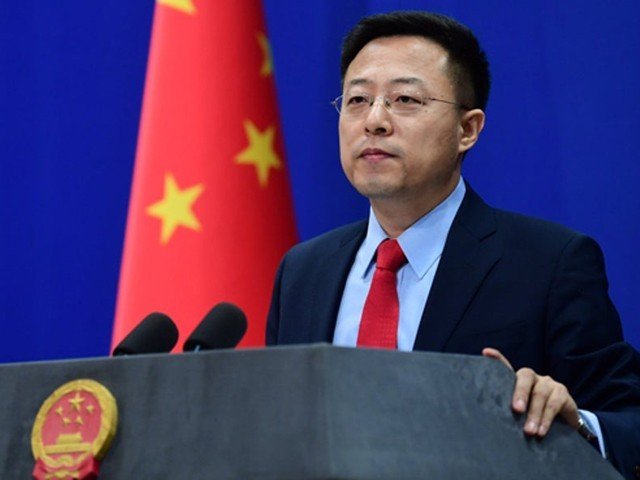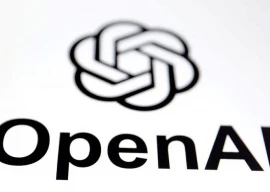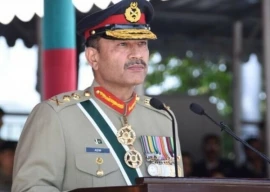
The Chinse diplomat said the Galwan Valley area is located on the Chinese side of the LAC in the western section of the Sino-Indian boundary.
A step-by-step account of the Galwan clash
— Lijian Zhao 赵立坚 (@zlj517) June 20, 2020
1. The Galwan Valley is located on the Chinese side of the Line of Actual Control in the west section of the China-India boundary. For many years, the Chinese border troops have been patrolling and on duty in this region.
"For many years, the Chinese border troops have been patrolling and on duty in this region." Zhao said.
“Since April, the Indian border troops have unilaterally and continuously built roads, bridges and other facilities at the LAC in Galwan Valley.”
2. Since April, the Indian border troops have unilaterally and continuously built roads, bridges and other facilities at the LAC in Galwan Valley. China lodged representations and protests on multiple occasions but India went even further to cross the LAC and made provocations.
— Lijian Zhao 赵立坚 (@zlj517) June 20, 2020
Zhao also further that China lodged representations and protests on multiple occasions but Indian troops crossed the LAC and were responsible for provocations.
“On May 6, Indian border troops crossed LAC, trespassed into China's territory, built fortification and barricades, which impeded the patrol of Chinese border troops,” Zhao said.
“They deliberately made provocations in an attempt to unilaterally change the status quo of control and management.”
3. On May 6, Indian border troops crossed LAC, trespassed into China's territory, built fortification & barricades, which impeded the patrol of Chinese border troops. They deliberately made provocations in an attempt to unilaterally change the status quo of control & management.
— Lijian Zhao 赵立坚 (@zlj517) June 20, 2020
The Chinese border troops were compelled to take necessary measures to respond to the situation on the ground and strengthen management and control in the border areas, the Chinese diplomat added.
“To ease the situation, China and India stayed in close communication through military and diplomatic channels.”
4. The Chinese border troops were compelled to take necessary measures to respond to the situation on the ground and strengthen management & control in the border areas. To ease the situation, China and India stayed in close communication through military and diplomatic channels.
— Lijian Zhao 赵立坚 (@zlj517) June 20, 2020
He added that, in response to the strong demands by China, India agreed to withdraw the personnel who had crossed the LAC and demolish the facilities, which they did.
5. In response to the strong demand of the Chinese side, India agreed to withdraw the personnel who crossed the LAC and demolish the facilities, and so they did.
— Lijian Zhao 赵立坚 (@zlj517) June 20, 2020
“On June 6, the border troops held a commander-level meeting and agreed to ease the situation,” Zhao elaborated. “India promised it would not cross the estuary of Galwan River to patrol and build facilities.”
6. On June 6, the border troops held a commander-level meeting & agreed to ease the situation. India promised it would not cross the estuary of Galwan river to patrol & build facilities. The two sides would discuss & decide phased withdrawal of troops by officials on the ground.
— Lijian Zhao 赵立坚 (@zlj517) June 20, 2020
“Shockingly, on the evening of June 15, India's front-line troops, in violation of the agreement reached the commander-level meeting, once again crossed the Line of Actual Control for deliberate provocation when the situation in the Galwan Valley was already easing,” Zhao said.
7. Shockingly, on the evening of June 15, India's front-line troops, in violation of the agreement reached at the commander-level meeting, once again crossed the Line of Actual Control for deliberate provocation when the situation in the Galwan Valley was already easing.
— Lijian Zhao 赵立坚 (@zlj517) June 20, 2020
“India’s front-line troops even violently attacked the Chinese officers and soldiers who went there for negotiation, thus triggering fierce physical conflicts and causing casualties,” he added.
8. India’s front-line troops even violently attacked the Chinese officers and soldiers who went there for negotiation, thus triggering fierce physical conflicts and causing casualties. This is the step-by-step account of the Galwan clash.
— Lijian Zhao 赵立坚 (@zlj517) June 20, 2020
1736930668-0/Untitled-design-(97)1736930668-0-405x300.webp)

1736929668-0/Untitled-design-(96)1736929668-0-165x106.webp)

1736929186-0/BeFunky-collage-(50)1736929186-0-165x106.webp)

1736924527-0/sidra--(3)1736924527-0-270x192.webp)

1736922471-0/sidra--(2)1736922471-0-270x192.webp)


1732012115-0/Untitled-design-(14)1732012115-0-270x192.webp)
1736844405-0/Express-Tribune-(2)1736844405-0-270x192.webp)










COMMENTS
Comments are moderated and generally will be posted if they are on-topic and not abusive.
For more information, please see our Comments FAQ